|
Takenoko
Author: Antoine Bauza
Publisher: Bombyx/Matagot/Asmodee
Year: 2011
review by

| x |
|
|
|
|
|
|
|
|
|
|
|
|
|
|
|
|
|
|
|
|
|
|
|
|
|
|
|
|
|
|
|
|
|
|
|
|
|
|
|
|
|
|
|
|
|
|
|
|
|
|
|
|
|
|
|
|
|
|
|
|
|
|
 |
Takenoko! It sounds like a war cry from an Eastern warrior. When we look a the front of the box this first changes immediately; a cute panda bear who wanders somewhat confused through a pastel coloured garden, an umbrella in its hand, eh, pawn. The rules of the game start with a short comic that explains the background of this panda bear: it is a present from the Chinese emperor to his Japanese colleague who now has to give this panda an appropriate housing. A garden is found for this purpose, full of bamboo to feed the animal, and including a gardener who has to take care that the bamboo keeps on growing. Apparently a stressful job, when you look at the gardener’s expression. This rather unusual theme has been translated to a board game, where by placing garden tiles (called plots), growing bamboo, and collecting (eating) it again, the players try to achieve related objectives. As can be expected, points are scored for achieving the objectives.

|
|
|
|
|
|
| x |
|
|
|
|
|
|
|
|
|
|
|
|
|
|
|
|
|
|
|
|
|
|
|
|
|
|
|
|
|
|
|
|
|
|
|
|
|
|
|
|
|
|
|
|
|
|
|
|
|
|
|
|
|
|
|
|
|
|
|
|
|
|
|
The objectives form the core of Takenoko, and come in three categories. For the garden objectives some tile configuration must be present in the garden. To complete a panda objective a player must have collected certain pieces of bamboo from the garden, while for a gardener objective a certain bamboo configuration must be present in the garden.
|
|
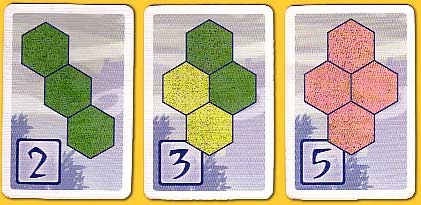 |
|
|
|
|
| x |
|
|
|
|
|
|
|
|
|
|
|
|
|
|
|
|
|
|
|
|
|
|
|
|
|
|
|
|
|
|
|
|
|
|
|
|
|
|
|
|
|
|
|
|
|
|
|
|
|
|
|
|
|
|
|
|
|
|
|
|
|
|
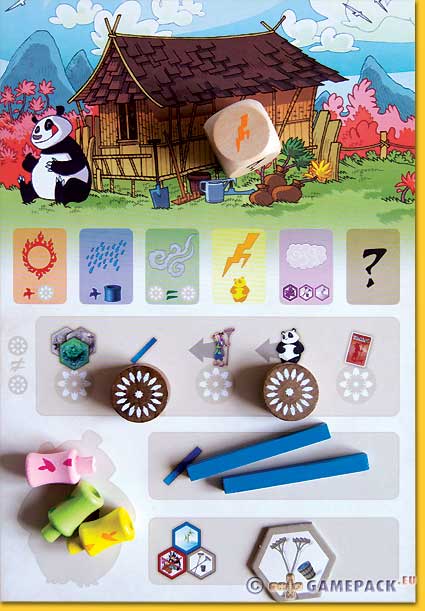 |
At the start of the game each player receives one objective (card) from each category. The garden is built during the game by the players by placing 6-sided tiles, in three different colors. As a start a special “pond tile” is used, on which the panda bear and gardener figures are placed. Each player is given an individual board, which is used as a player aid and storing things during the game. During his turn, a player may first “determine the weather” by throwing a special dice. This weather typically influences the remainder of the turn, which consists of choosing two different actions from 5 possible actions.
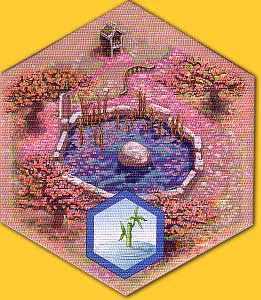 |
|
|
|
|
|
| x |
|
|
|
|
|
|
|
|
|
|
|
|
|
|
|
|
|
|
|
|
|
|
|
|
|
|
|
|
|
|
|
|
|
|
|
|
|
|
|
|
|
|
|
|
|
|
|
|
|
|
|
|
|
|
|
|
|
|
|
|
|
|
One action is to extend the garden by taking three garden tiles from the draw pile (shuffled before game start) and placing one of them next to one or more other tiles. In the beginning this placement is always next to the pond tile, thereby irrigating the placed tile. This is not unimportant, since initial irrigation of an empty tiles implies that bamboo will immediately start to grow from it - a bamboo shoot in the right color is placed on the tile.
 |
|
 |
|
|
|
|
|
| x |
|
|
|
|
|
|
|
|
|
|
|
|
|
|
|
|
|
|
|
|
|
|
|
|
|
|
|
|
|
|
|
|
|
|
|
|
|
|
|
|
|
|
|
|
|
|
|
|
|
|
|
|
|
|
|
|
|
|
|
|
|
|
 |
|
A second possible action is the movement of the panda; always in a straight line from one tile to another. On the tile where the panda ends he will eat one bamboo shoot there, when available. This piece of bamboo is placed on the player’s game board.
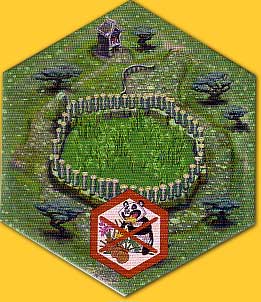 |
|
|
|
|
|
| x |
|
|
|
|
|
|
|
|
|
|
|
|
|
|
|
|
|
|
|
|
|
|
|
|
|
|
|
|
|
|
|
|
|
|
|
|
|
|
|
|
|
|
|
|
|
|
|
|
|
|
|
|
|
|
|
|
|
|
|
|
|
|
| A similar movement action can also be done with the gardener, but with him a bamboo shoot is added on the tile of arrival (to a maximum of four), provided the tile is irrigated. This irrigation can be aided by the fourth possible action, where an irrigation channel can be taken from the supply and either immediately placed between two garden tiles, or placed on the player’s game board for future use. The fifth and final possible action enables the player to take one new objective card, from one of the three categories. |
|
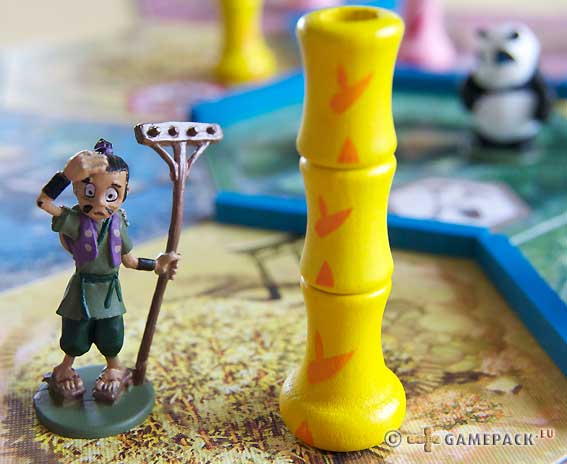 |
|
|
|
|
|
| x |
|
|
|
|
|
|
|
|
|
|
|
|
|
|
|
|
|
|
|
|
|
|
|
|
|
|
|
|
|
|
|
|
|
|
|
|
|
|
|
|
|
|
|
|
|
|
|
|
|
|
|
|
|
|
|
|
|
|
|
|
|
|
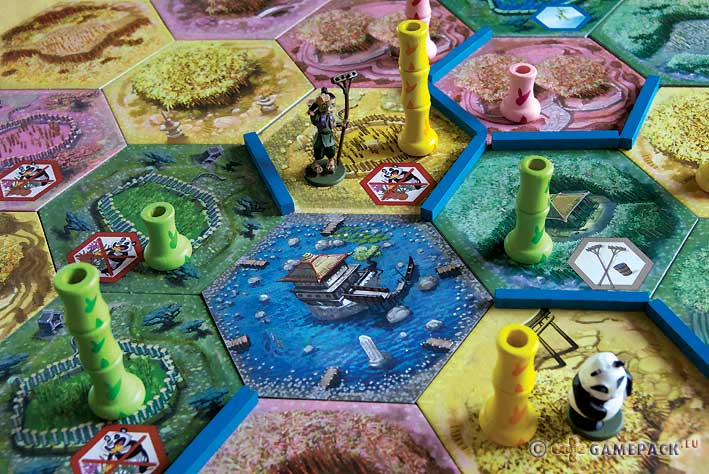 |
|
|
|
|
| x |
|
|
|
|
|
|
|
|
|
|
|
|
|
|
|
|
|
|
|
|
|
|
|
|
|
|
|
|
|
|
|
|
|
|
|
|
|
|
|
|
|
|
|
|
|
|
|
|
|
|
|
|
|
|
|
|
|
|
|
|
|
|
|
With the throw of the “weather dice” a player will usually have some advantage during the rest of his turn: a third action for example, or the possibility to perform two identical actions. When sometimes during a player’s turn an objective is achieved, this is shown to the other players and the card is placed in front of the player.
|
|
|
|
|
|
| x |
|
|
|
|
|
|
|
|
|
|
|
|
|
|
|
|
|
|
|
|
|
|
|
|
|
|
|
|
|
|
|
|
|
|
|
|
|
|
|
|
|
|
|
|
|
|
|
|
|
|
|
|
|
|
|
|
|
|
|
|
|
|
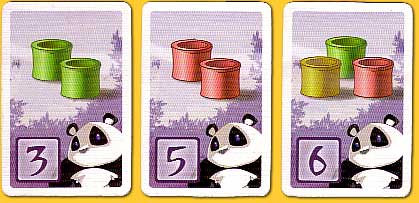 |
|
The end of the game is near when one of the players has achieved a certain number of objectives. This number depends on the number of players: 9, 8, or 7 objectives with 2, 3 or 4 players. The other players now have one complete turn, where after the points on their objective cards are added together. The player with the most points wins, and receives the congratulations of the Emperor! |
|
|
|
|
|
| x |
|
|
|
|
|
|
|
|
|
|
|
|
|
|
|
|
|
|
|
|
|
|
|
|
|
|
|
|
|
|
|
|
|
|
|
|
|
|
|
|
|
|
|
|
|
|
|
|
|
|
|
|
|
|
|
|
|
|
|
|
|
|
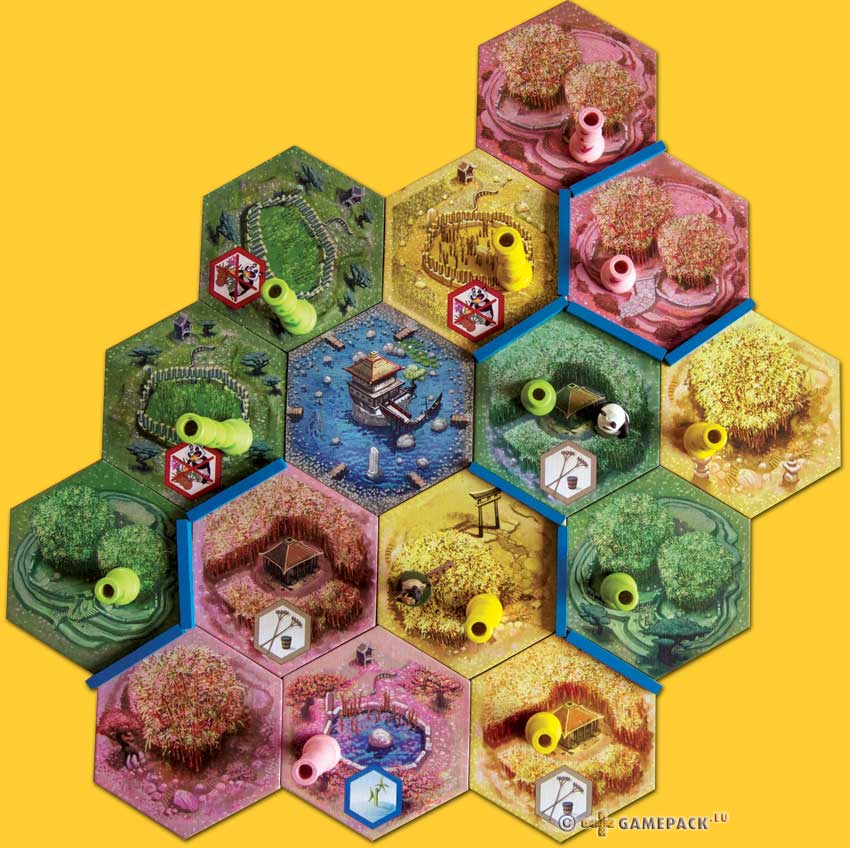 |
|
| x |
|
| x |
|
| x |
|
 |
|
|
|
|
|
|
|
|
|
|
|
|
|
|
|
|
|
|
|
|
|
|
|
|
|
|
|
|
|
|
|
|
|
|
|
|
|
|
|
|
|
|
|
|
|
|
|
|
|
|
|
|
|
|
Takenoko has everything a good family game needs nowadays: quickly set-up and explained, challenging, but not too difficult, considerations trying to achieve objectives as fast as possible. Finally, the game looks very nice, with the gardener and panda figures and the bamboo shoots, which 'really' start to grow all over the garden.
|
|
|
|
|
|
| x |
|
|
|
|
|
|
|
|
|
|
|
|
|
|
|
|
|
|
|
|
|
|
|
|
|
|
|
|
|
|
|
|
|
|
|
|
|
|
|
|
|
|
|
|
|
|
|
|
|
|
|
|
|
|
|
|
|
|
|
|
|
|
 |
Player interaction is sufficiently provided, since players will help or hinder each other, depending on their objectives. The more experienced player will complain about the lightness of the game, and the luck involved in throwing the dice and drawing objective cards. Indeed, a lucky throw of the dice in the final turn could mean a difference of several points, a difference between victory and defeat.
|
|
|
|
|
|
| x |
|
|
|
|
|
|
|
|
|
|
|
|
|
|
|
|
|
|
|
|
|
|
|
|
|
|
|
|
|
|
|
|
|
|
|
|
|
|
|
|
|
|
|
|
|
|
|
|
|
|
|
|
|
|
|
|
|
|
|
|
|
|
|
Also, drawing objective cards towards the end of the game could mean the objectives are immediately satisfied, a phenomenon which can be suppressed by the so-called expert variant. But this is something the game not really needs: it is a nice atmospheric family game, where the winner typically thinks he played pretty good, and the others “complain” about lack of luck. Some negative remarks need to be made as well: the pictures on the weather dice are quite difficult to read, and a mistake is made in the translation of the tile placement action. But these are just minor ripples in the pond, to stay in tune with this game.
|
|
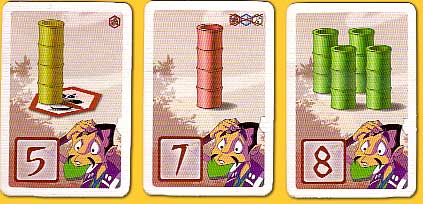 |
|
|
|
|
|
| x |
|
|
|
|
|
|
|
|
|
|
|
|
|
|
|
|
|
|
|
|
|
|
|
|
|
|
|
|
|
|
|
|
|
|
|
|
|
|
|
|
|
|
|
|
|
|
|
|
|
|
|
|
|
|
|
|
|
|
|
|
|
|
 |
In short, Takenoko, which as a matter of fact means bamboo sprout according to the rules, is highly recommended to anyone considering buying a game for the whole family. It can also be used to introduce new people to the board game hobby. Antoine Bouza shows that after the Kennerspiel '7 Wonders' he is able to produce another very interesting game and he is certainly an author to keep an eye on in the future.
© 2012 Edwin van de Sluis |
|
|
|
|
|
Takenoko, Antoine Bauza, Bombyx/Matagot/Asmodee, 2012 - 2 to 4 players, 8 years and up, 45 minutes
|
|
  |
|
|
|
|
|
|
|
|
|
|
|
|
|
|
|
|
|
|
|
|
|
|
|
|
|
|
|
|
|
|
|
|
|
|
|
|
|
|
|
|
|
|
|
|
|
|
|
|
|
|
|
|
|
  |
|
|
|
|
|
|
|
|
|
|
|
|
|
|
|
|
|
|
|
|
|
|
|
|
|
|
|
|
|
|
|
|
|
|
|
|
|
|
|
|
|
|
|
|
|
|
|
|
|
|
|
|
|
  |
Just a tadd too random |
|
|
|
|
|
|
|
|
|
|
|
|
|
|
|
|
|
|
|
|
|
|
|
|
|
|
|
|
|
|
|
|
|
  |
|
|
|
|
|
|
|
|
|
|
|
|
|
|
|
|
|
|
|
|
|
|
|
|
|
|
|
|
|
|
|
|
|
  |
Nice and beautifully produced game with a bit too much randomness |
|
|
|
|
|
|
|
|
|
|
|
|
|
  |
|
|
|
|
|
|
|
|
|
|
|
|
|
| x |
|
|
|
|
|
|
|
|
|
|
|
|
|
|
|
|
|
|
|
|
|
|
|
|
|
|
|
|
|
|
|
|
|
|
|
|
|
|
|
|
|
|
|
|
|
|
|
|
|
|
|
|
|
|
|
|
|
|
|
|
|
|
| x |
|
|
|
|
|
|
|
|
|
|
|
|
|
|
|
|
|
|
|
|
|
|
|
|
|
|
|
|
|
|
|
|
|
|
|
|
|
|
|
|
|
|
|
|
|
|
|
|
|
|
|
|
|
|
|
|
|
|
|
|
|
|
 |
|
|
|
|
|
|
|
|
|
|
|
|
|
|
|
|
|
|
|
|
|
|
|
|
|
|
|
|
|
|
|
|
|
|
|
|
|
|
|
|
|
|
|
|
|
|
|
|
|
|
|
|
|
 |
|
|
|
|
|
|
|
|
|
|
|
|
|
|
|
|
|
|
|
|
|
|
|
|
|
|
|
|
|
|
|
|
|
|
|
|
|
|
|
|
|
|
|
|
|
|
|
|
|
|
|
|
|
| x |
|
|
|
|
|
|
|
|
|
|
|
|
|
|
|
|
|
|
|
|
|
|
|
|
|
|
|
|
|
|
|
|
|
|
|
|
|
|
|
|
|
|
|
|
|
|
|
|
|
|
|
|
|
|
|
|
|
|
|
|
|
|
 |
|
|
|
|
|
|
|
|
|
|
|
|
|
|
|
|
|
|
|
|
|
|
|
|
|
|
|
|
|
|
|
|
|
|
|
|
|
|
|
|
|
|
|
 |
|
|
|
|
|
|
|
|
|
|
|
|
|
|
|
|
|
|
|
|
|
|
|
|
|
|
|
|
|
|
|
|
|
|
|
|
|
|
|
|
|
|
|
|
|